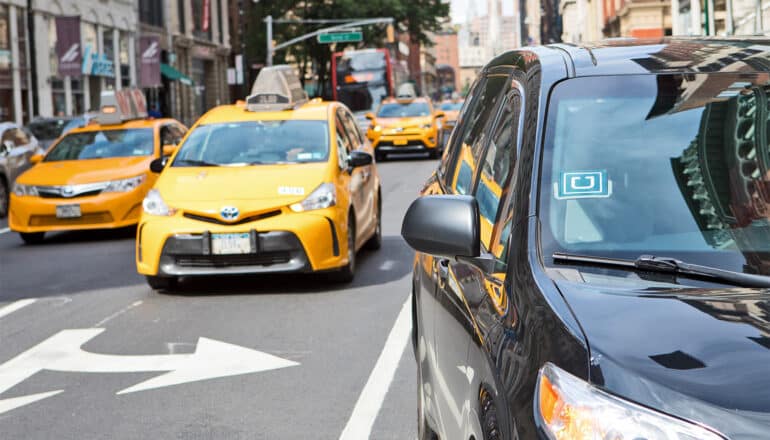
Ride-sharing platforms significantly outperform taxis in coping with urban emergencies such as a terrorist attack or subway shutdowns, largely due to the benefits of technology, a new study shows.
“Our study offers important insights into the design of platform strategies, especially for stimulating labor supply and providing incentives for urban transportation systems to adopt and use technology in response to urban emergencies,” says Beibei Li, associate professor of IT and management at Carnegie Mellon University’s Heinz College and coauthor of the study in Information Systems Research.
Emergencies in urban settings can result in significant human and economic loss if they are not handled properly. While research has focused on developing and evaluating technology for emergency management, the field lacks solid evidence about how technology-initiated digital systems perform under such stressors.
Since urban transportation systems are a crucial part of cities’ emergency preparedness, researchers sought to understand how technology-equipped transportation services (i.e., ride-sharing platforms such as Uber) cope with uncertainty and help facilitate emergency relief.
Researchers collected taxi and for-hire vehicle records in New York City from January 2015 to December 2017. They considered how the services performed in multiple types of urban disasters, including terrorist attacks, subway shutdowns, and car crashes, measuring platform-level use based on the hourly number of trips.
Ride-sharing platforms outperformed taxi companies after urban emergencies. For example, while both taxis and ride-sharing services saw a decline in the use of their services after the September 17, 2016 bombing and the October 31, 2017 truck attack in New York City, the ride-sharing platforms experienced a smaller decline.
Several possibilities explain the better performance of ride-sharing platforms, chief among them the effect of technology used in ride-share platforms and the elasticity of supply of ride-share vehicles and drivers.
The study also found that locations with higher densities of people were less affected by urban emergencies than those with lower densities. The decrease in individuals’ use of taxis at such times was smaller during rush hours and evenings than at midnight and during the daytime. In contrast to this fluctuation in taxi use, daily use of ride-sharing platforms was relatively stable.
“Disasters are critical threats to the stability of urban transportation systems,” says lead author Yingjie Zhang, assistant professor of marketing at Peking University’s Guanghua School of Management. “Our work sheds light on how technology supports emergency management, as well as how the public reacts to the adoption of technology during an urban crisis.”
Among the limitations of the study, the authors point out that the data they used allowed them to examine only successfully fulfilled trips. In addition, they were unable to consider confounding factors, such as traffic that had been reallocated after an emergency or the redistribution of drivers away from an attack.
“In light of our findings, service providers and city planners should reevaluate and improve their mobility platform, particularly under emergencies, disasters and hazards,” says coauthor Sean Qian, professor of civil and environmental engineering at Carnegie Mellon University.
“Also, passengers with an urgent need to get someplace during emergencies may want to consider a ride-sharing or ride hailing service first, provided that they have relatively stable supply and technological support.”
Source: Carnegie Mellon University
The post Ride sharing beats taxis during urban emergencies appeared first on Futurity.
from Futurity https://ift.tt/cCRbmid
No comments:
Post a Comment